Someone asked me how to mix horns combined with other instruments such as drums:
Hello, thank you so much for all the advice and tips you offer on this site…very helpful. 1 song, sounds like an old Chicago, horn driven pop tune: 2 trumpets, trombone and sax. It’s a horn driven tune. It all went into Pro tools well, plenty of bottom, horns sound great and blended them well. Let’s assume that I recorded, eq’d, and made minor cuts in each instrument. Horns are compressed. Sound great….when I turn the horns up to where you need them; the drums start to fade slightly but not badly. I can hear all the rhythm and drums still but they start to fade. How can I make them work together? Here’s where I have problems-compressing the drums. I don’t know how to do it on my own. And go by other people’s numbers. I’ve been working very hard on this one, if you did some material on mixing horns; there are tons of people on here who would listen. Horns can be tough, especially if it’s constant horns overlapping from one speaker to the next and thanks in advance.
Reply:
Thanks for your inquiry. First, your problem is most likely “masking”. This is where frequencies of different instruments overlapped each other. As a result, if one instrument increases in volume, it will dominate the other instruments in the mix resulting to fading and weakening sound of the other. In your case, you have your brass instruments and drums. If you increase the volume of these instruments; it affects other instruments such as drums. There is masking issue between these instruments. Solving the masking problem in the mix is quite simple. You need to understand the frequency ranges of those instruments are and then assign each instrument its own space in the frequency spectrum. For example below is the frequency spectrum of brass and saxophone:

Meanwhile drums have the following desirable frequency range:
Kick: 50Hz to 100Hz
Snare = 800Hz to 2500Hz
Hi hats/Cymbals = 7000Hz to 15000Hz
You decide which instruments should occupy the different audio frequency range. The effective frequency range of audio mixing is from 35Hz (sub-bass) to 15,000Hz. No musical instruments should significantly occupy the same frequency range or else masking would occur. Supposing I have a brass instruments mix with drum kit that uses trombone in the bass, trumpet in (F-baritone) and finally saxophone for the soprano. Also I have some keyboards/organ on it. Below is my frequency assignment for these different instruments:

As you can see, I have assigned a specific frequency range for each instrument in the mix. For example, I would like the kick drum to occupy the very bottom frequency (< 100Hz) and then my Trombone bass line at 100Hz to 300Hz, so on and so forth. If you find it very hard to assign a frequency range of a specific instrument, you can confirm its dominant frequency range using an audio frequency spectrum analysis. Now you have clearly assigned which instrument would occupy that specific frequency what would you do next? The next thing is to EQ each of the instruments in the mix using a parametric equalizer. Low shelf and high shelving filters are also used. Using the frequency assignment chart above as the guide; below are the complete EQ settings for different instruments in the sample mix (the dB cut or boost are example only, in actual scenario you should be using your ears to judge if the setting is enough):
Kick drum:
Boost +3dB Q=1.4 at 75Hz (improve clarity of kick bass)
High Shelf filter of -9dB starting at 100Hz (reduce masking with trombone bass)
Trombone bass:
Low shelf filter of -9dB starting at 100Hz (reduce masking with kick drum)
Boost +3dB Q=1.4 at 200Hz (improve trombone bass clarity)
High shelf filter of -6dB starting 300Hz (reduce masking with the rest of instruments with frequency assignment above 300Hz)
Trumpet:
Low shelf filter of -9dB starting at 300Hz (reduce masking with kick drum and trombone bass)
Boost +3dB Q=1.4 at 450Hz (improve trumpet clarity)
High Shelf filter at -6dB starting at 600Hz (reduce masking with sax, snare, organ, etc.)
Saxophone:
Low shelf filter of -9dB starting at 600Hz (reduce masking with kick drum, trombone bass and trumpet)
Boost +3dB Q=1.4 at 800Hz (improve saxophone clarity in the mix)
High Shelf filter at -6dB starting at 1000Hz (reduce masking with snare, organ and hi hats.)
Snare:
Low shelf filter of -9dB starting at 1000Hz (reduce masking with instruments below this frequency cut-off)
Boost +3dB Q=1.4 at 1750Hz (make snare sound clear)
High Shelf filter at -6dB starting at 2500Hz (reduce masking with organ and hi hats.)
Organ:
Low shelf filter of -9dB starting at 2500Hz
Boost +3dB Q=1.4 at 4000Hz
High Shelf filter at -6dB starting at 7000Hz
Hi-hats/Cymbals
Low shelf filter of -9dB starting at 7000Hz
Boost +3dB Q=1.4 at 12 KHz
About compressing the drums, you can refer to the following tutorials for details:
Compressing snare
Compressing kick
If you have another wind or brass instruments, then you will apply the same concept in resolving the masking issues. Do not use track volume faders to solve masking issues. Instead tweak your EQ by trying to increase or cut the affected dB of those instruments. For example if -6dB cut is not enough, make it -9dB. Or if +3dB boost is not enough, try +6dB on that specific frequency range until maximum clarity is obtained. Use your ears.
Content last updated on June 15, 2012
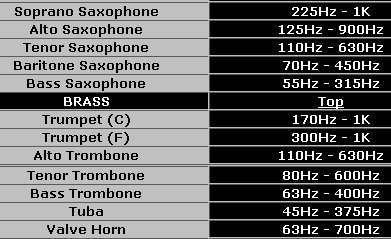

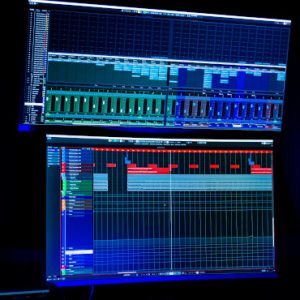
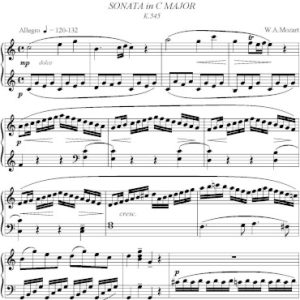
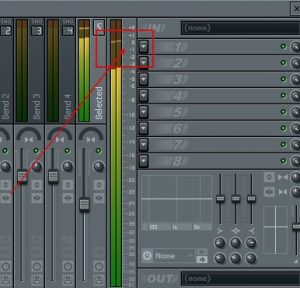

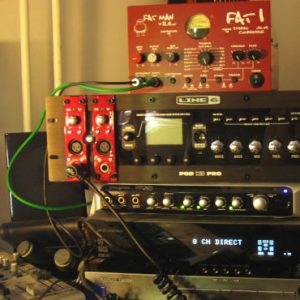


3 Responses
Finally , a tutorial to deal with these issue’s..Everytime i do a mix, even with a multi track background, i can’t get the sax the blend in, it’s always on top of the rest…So, i am going to try this en post some feadback.
In the meanwhile, i do have a question about blending in. What if i use a single track background…I take an excisting track for example say a song of Nina simone…( to name just one..) record playing sax over it…is there a way to blend it in also? I guess giving the backing track its own space wont work because it contains many instruments?
Thanks Mike for the feedback. It is important to experiment with those settings to come up with the best results. The idea of boosting and cutting with specific settings is not intended to be applicable to all brass recordings or mixes. The principle is to assign a specific frequency range for each instrument in the mix. If you need the brass overtones, then you need to minimize the cutting on the upper end of its spectrum but you risk the clarity of other instruments on the higher range like trumpets, saxophone, etc. So again, you need to adjust.
I’ve encountered your situation before in my mix. What I did to resolve successfully is to examine the underlying frequency spectrum of its instrument using the techniques outlined here:
Finding instrument frequencies using notch filtering
Using parametric EQ to find the sweet spot of any instruments
Musical instrument frequency range analysis
Once you know which frequencies to boost or cut, it is a matter of trial and error on the Q and boost/cut settings to arrive at the best results. Q settings can be tricky sometimes, you need to monitor very carefully about the changes in sound with respect to Q. I agree that 1.4 can be wide, so try a narrower Q settings like 2 or even 3 and see how it works for you. Monitor at average volume for best results and make sure the acoustic response of your room is flat.
For more in-depth theory on overlapping frequencies because of wider Q, you can read this tutorial.
Great site. I tried this yesterday out of curiosity because I’m working with brass in a mix, and although I have an electric bass (playing slap), which I muted for the purpose of this exercise, in place of a bass trombone, the instruments are much the same as yours.
I have to say, it didn’t work well at all. Fundamentals muddying the low-mids and lack of overtones in the mid-range damping brightness. I mean, this is brass, we need those overtones, right?
What I don’t understand is the suggestion of boosting when you are already cutting with shelving filters either side? That is a boost, effectively.
Also, the Q widths, all specified at 1.4, rendered curves which are too wide in the low-end, such that when I stacked the EQ displays of each instrument vertically on the screen, it was clear there was significant spillover into neighbouring instruments’ frequency range, mirroring what I was hearing; i.e., masking.
Anyway, I’m going to play around with the principle again in case I’m missing a trick.